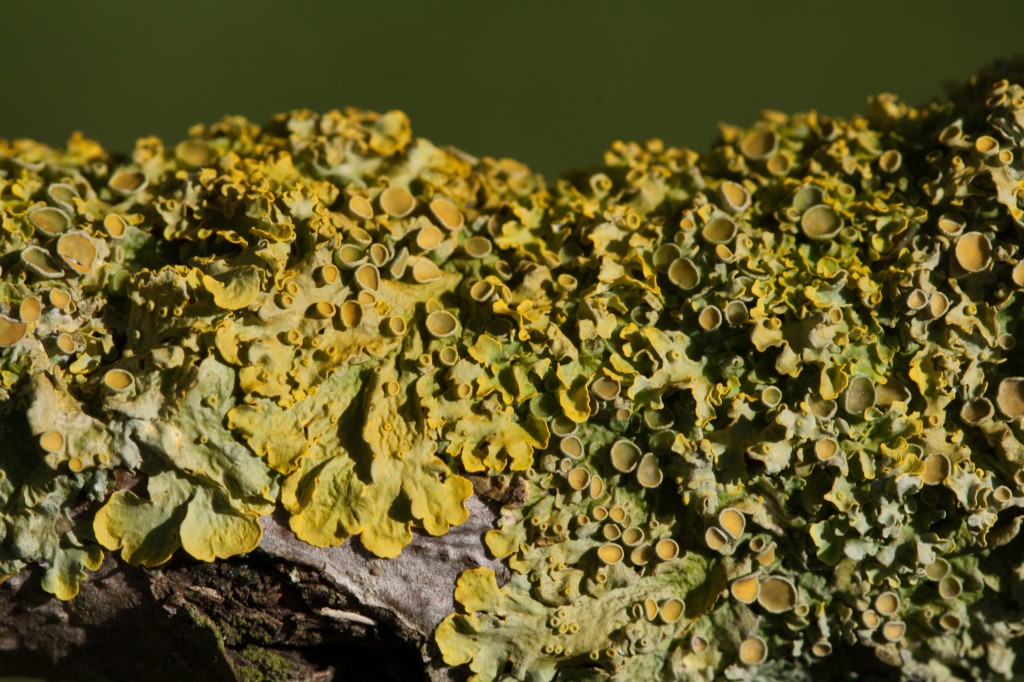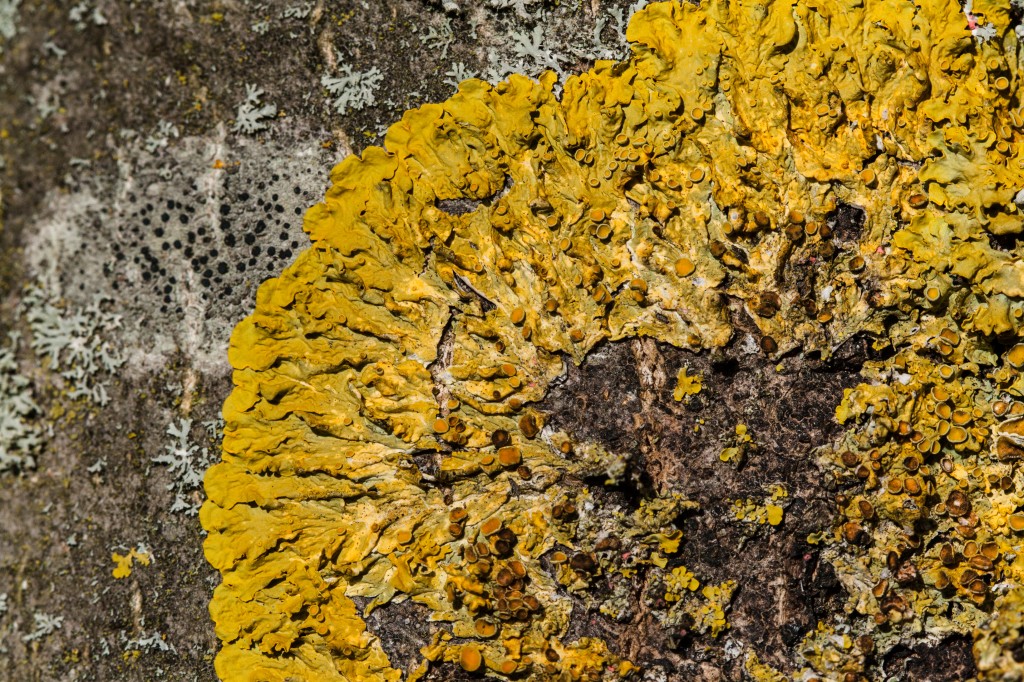I know almost nothing about lichens. In fact, up until a couple of months ago I actually knew nothing about them. So, I have been set the task of finding out as much as I can by the end of this year. I still haven’t worked out how I will do that, but I am on the case.
I now know that lichens are composed of a fungus (mycobiont) and an algae or cyanobacteria (photobiont) that exist in a symbiotic relationship. The jury is out as to whether the algae gains anything from the relationship whilst the fungus most definitely gets nutrients thanks to photosynthesis by the algae. However, the algae might gain a degree of protection from high light levels and periods of drought thanks to this partnership.
One of the commonest and most easily recognisable lichens in xanthoria parietina or the maritime sunburst lichen. This is a beautiful orange-yellow lichen with obvious fruiting bodies. It is the one that can often be seen in winter making the trees look as though they have yellow branches. As well as growing on trees it is also sometimes found on stone. It is also often seen on rooftops where the lichen gains nutrients from bird droppings. Lichens are well studied as indicators of pollution, some being more tolerant than others. The reason that there is so much of this sunburst lichen about, is that it is noted to be very pollution tolerant.
Lichens employ a couple of methods (some lichens employ both) to spread and reproduce. Xanthoria parietina uses just one of these methods, producing fruiting bodies as per other fungi which then release spores that are dispersed to establish new colonies if they can find a suitable algae. These fruiting bodies are obvious even to the naked eye.
At one time this lichen was used to treat jaundice because of its colour, but nowadays, in common with many other lichen, it is being investigated for other medicinal properties; in this case for its antiviral activity.

